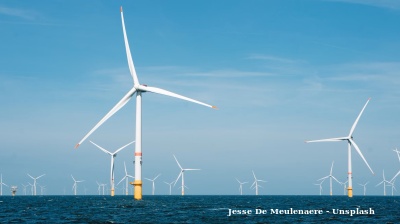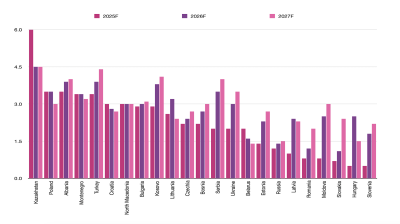Moldova’s Ministry of Energy has launched public consultations on a draft Energy Strategy 2050, described as the country’s most ambitious in three decades, the ministry announced on September 12. The plan foresees a €43bn investment programme — equivalent to 2.5 times Moldova’s GDP in 2024 but below the annual GDP projected for 2050 — to transform the national energy sector.
The strategy aims to strengthen energy security, reduce greenhouse gas emissions and align Moldova with European sustainability standards. If fully implemented, the ministry estimates that by 2050 the national economy could triple in size compared with today. A central objective is to cut dependence on energy imports from over 77% at present to 40% by mid-century.
Key measures include eliminating coal consumption by 2030 and sharply reducing the use of natural gas and petroleum products. Installed power capacity is projected to exceed 5,000 MW in 2050, more than five times the current level, excluding Transnistrian facilities. Wind power, with a planned capacity of 2.6 GW — 12 times higher than today — would account for roughly half of production, followed by solar energy and storage facilities. Gas-fired plants would fall below 10% of installed capacity.
The share of electricity from carbon-free sources is expected to reach 85% of domestic production in 2050, with about 90% of demand supplied by renewable sources, including solar, wind, biomass and high-efficiency cogeneration. The draft also introduces the option of building a 300 MW small modular nuclear reactor to replace the Cuciurgan thermal power plant scheduled for closure.
Transport electrification and fleet modernisation represent the largest investment component, estimated at €17.5bn. A further €9.1bn would be allocated to building rehabilitation, €5.5bn to modernising heating systems, and €8.5bn to expanding electricity production capacity, largely financed by private investors.
The ministry said the costs are offset by long-term savings, including over €4bn from reduced natural gas consumption, a 30% fall in operation and maintenance costs, and annual savings of €355mn by 2030, rising to more than €1bn in 2050. Economic modelling suggests the energy transition could add about 2% to Moldova’s annual GDP growth.
bneGREEN

The Arctic and Antarctica record "off the charts" heat as polar warming accelerates
Parts of both the Arctic and Antarctic have experienced historically high temperatures in recent weeks, with weather stations in East Antarctica recording record-breaking warmth for the month of October, alarming climate scientists.

Giant glacier chunk breaks away in Tajikistan, mountain villages put on alert
Situation serves as reminder that climate crisis threatens to wreak havoc in Central Asian country.

Singapore’s green pivot – headline grabbing but still limited
Forays into offshore wind via regional cooperation with neighbours, and forward-looking bets on hydrogen and low-carbon fuels are making headlines, but the scale required to wean a heavily gas-dependent system off fossil fuels is still daunting.

North Macedonia's Skopje tackles mounting waste and rodent crisis
Locals say the problems in Skopje's Centar municipality worsened during the local election period when political campaigning took precedence over maintenance.




